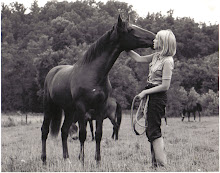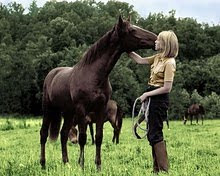I'm excited because Tuesday was our
first cooking class in a series at the North Carolina Aquarium.
We've attended these for the past two years
and I've been eagerly anticipating the start of this year's series.
Chefs Todd Riddick and Jim Smith
of
Mama Kwan's Grill and Tiki Bar
presented the demonstration.
And lookee!

We have perks!

A lei, a mug, a T-shirt!
Ah.
The bar is raised.
Today's meal is Seafood Enchilada.
Listen up, Ange in Wisconsin.
You're going to like this.
Ange in Wisconsin often challenges me
with her Just Ask Rosie questions.
And back in December,
Ange wanted Rosie to make
enchiladas and lasagna.
Here's
my first attempt.
Then I made a
shrimp enchilada
which according to Wikipedia
is questionable.
My third attempt.
And
here's the lasagna I made.
Back to Mama Kwan's cooking demo.

I snapped a shot of some of the ingredients
on the counter.
Heavy cream,
Sriracha Sauce,
kidney beans, cilantro, onions, peppers, tomatoes,
lemons, limes, Romaine, green onions, and tortillas.
I haven't mentioned this before in my posts about these classes,
but before we actually start on the cooking demonstration,
Beth, the wonderful, efficient, and knowledgeable
NC Aquarium Activities/Program Coordinator/Educator,
always explains the fish in question.
She presents an extremely informative,
enlightening, and interesting discourse on the seafood.
For example,
I learned that rockfish are anadromous.
That means they live in the ocean,
but spawn in rivers.
In fact, fish are classified
as to their migration patterns.
From Wiki:
Classification
Fish can migrate vertically, up and down the water column, or horizontally, across oceans or along rivers. Many marine species make daily, or diel vertical migrations (Latin: 'Dies' is day).
Classification of horizontally migrating fish:
- potamodromous fish migrate within fresh water only (Greek: Potamos is river and dromos is 'a running').
- oceanodromous fish migrate within salt water only (Greek: 'Oceanos' is ocean).
- diadromous fish travel between salt and fresh water (Greek: 'Dia' is between).
-
- anadromous fish live in the ocean mostly, and breed in fresh water (Greek: 'Ana' is up; The noun is "anadromy")
- catadromous fish live in fresh water, and breed in the ocean (Greek: 'Kata' is down)
- amphidromous fish move between fresh and salt water during their life cycle, but not to breed (Greek: 'Amphi' is both)
I don't know about you,
but I always want to know where
the fish I'm eating goes to spawn.

Chef Jim Smith preps the veggies.

In the bowl above
are the beginnings of the enchilada filling.
It's cream cheese with a sauteed onion mixture.
Chef Riddick, commentator,
(Sadly, he was out of commission for cooking
due to the cast on his right hand.)
reiterated Beth's comments
about sustainable fisheries,
management of fisheries for long-term viability,
the importance of buying fish caught locally,
and adherence to seafood availability.
Check
here to see the 2009 stock status
of coastal NC fisheries.
No recipe, per se, was given,
but I'll have some instructions at the end -
my interpretation of what Chefs Riddick and Smith did
and Beth's frantic printing on
the computer/overhead projector-like thingie
while Chef Riddick was giving her the ingredients list.
Good job, Beth
on a totally user-UNFRIENDLY,
(Microsoft, I'm sure)
piece of software carnage.
Oh wait!
I meant the software is carnage.
Not Beth's use of it.
She was extremely adept.
They're serving about 20 enchiladas here
and Beth is putting up the ingredients
for 10 enchiladas.
First, the ingredients for 10 servings:
2 lbs cream cheese
2 cups shredded pepper jack
1 qt heavy cream
garlic
1 cup white wine
3 lb rockfish
butter
lemons
limes
1/2 cup fresh cilantro
1/2 cup scallions
1 jalapeno, fine dice
2 peppers
(The chefs used yellow and orange.)
sweet onion
3 tomatoes
1 head of romaine
tortillas
I doubt if any of you out there would be making
ten servings of this,
so adjust accordingly.
Taste as you go along.
You know - cook.
It ain't rocket science.
Here's the
method:
Basically you're going to saute
your onions and add them
to cream cheese,
then saute the peppers
and add to the cream cheese.
Next, cook your rockfish
and combine it with the cream cheese,
sauteed onions and peppers,
and fill the tortillas with the mixture.
A cheese and cream sauce (Alfredo)
is poured over top.
More cheddar/jack cheese is sprinkled,
then it goes back into the oven to melt the cheese.
The enchilada is served over a bed of rice and beans.
Sriracha sauce, enchilada sauce,
chopped tomatoes and romaine
accompany the enchiladas.

Chef Jim Smith preps the veggies.
Let's start with the
Alfredo Sauce:
Melt some butter.
Add a few minced cloves of garlic.
Add in heavy cream
Bring to a boil, whisking.
Add shredded cheddar/jack cheese slowly, whisking, to melt.
Done.
Keep warm.
If you need help with amounts,
just Google Alfredo Sauce.
Here's one:
Alfredo Sauce.
Instead of Parmesan, sub cheddar/jack.
And
here are a bunch more.
Now, for the
rockfish:
Put your rockfish in a buttered baking dish.
Add white wine and dot with butter.
Add salt and pepper, garlic, cumin,
cayenne, and lime and/or lemon.
Bake at 450 for 15 minutes.

Chef Smith prepares the seafood.
It's rockfish, AKA
striped bass.
He's adding butter, lemon juice,
garlic, cumin, cayenne,
lime/lemon juice,
white wine,
salt and pepper.
Next, let's start on the
filling for the enchiladas:
Disclaimer: For the following semi/half-assed "recipes,"
I offer
suggested amounts of ingredients
for the enchiladas.
The chefs from Mama Kwan's
made about 20 enchiladas.
I'm trying to adjust
to two - four (?) servings for you.
As always,
you taste as you go along.
Build up your flavors the way
you like.
My amounts are merely suggestions.
Saute in oil/butter:
onion, chopped (1)
garlic, minced (2-3 cloves)
cumin (maybe a tsp)
salt and pepper (a sprinkling of freshly ground)
5-7 minutes
Add mixture to room-temperature cream cheese
(maybe 1 - 2 packages)
Saute:
chopped pepper
(Maybe 1/4 each red, orange, yellow, green)
green onions (2)
cilantro (to taste)
2-3 minutes
Add in juice of one lime.
Add mixture to cream cheese and onion mixture.
After cooking the rockfish,
add it hot to the cream cheese mixture
and mix well.
Add more cilantro.

The cooked rockfish went into the
cream cheese/onion/pepper mixture.

It gets well-mixed.

Thusly.
The
filling for the enchiladas is ready.
Start on the
beans:
Saute:
jalapeno (One, if you like it hot.)
cilantro
salt and pepper
Add chicken base to intensify.
(
Chicken base is kinda like a bouillon
except it's a paste.)
cumin (1/2 tsp)
garlic (2-3 cloves, minced)
kidney beans, cooked (1 - 2 cups)
Add water to cover beans.
Simmer a bit.
Keep warm.

Back left is a basic cheese, cream sauce.
Alfredo.
Front right is a vegetable melange.

Back right is the bean thingy.
I'm still trying to remember what was front left.
Maybe just the skillet with a wisp of oil
to slightly tan the tortillas.
Check list:
tortillas
cream cheese/onion/pepper/rockfish mixture
bean mixture
Jasmine rice
chopped tomatoes
chopped (I prefer torn.) Romaine
The tortillas were heated in a skillet first,
a slight film of oil.
Then filled.
I video'd Chef Smith's rolling technique.
Roll up rockfish/cream cheese mixture in tortilla.
Top with Alfredo sauce,
sprinkle with cheddar/jack cheeses
and back into the oven to melt.
About 10 minutes.
While the enchiladas were heating up,
the chefs started plating the dishes.

An ice cream scoop of rice.
Scoop of the bean mixture on top of that.
A squiggly embellishment of sriracha on the plate.
A sprinkling of cayenne, paprika, and
I swear I thought he said nutmeg,
around the outside of the plate.

Then the enchilada was carefully placed so it was
leaning against the pile of rice and beans.
Enhance with enchilada sauce,
a sprinkling of cheese,
and chopped tomatoes and chopped romaine.

WHOOT!
It's a PARTAY!

I thought this was a lovely presentation.
BUUUUUTTTTTTTT!!!!!!!!
Let me just tell you this, Chefs:
I like the little capricious designs and florishes
and embellishments on the plate/presentation,
but for CRYING OUT LOUD,
give me the pretty colors in a cup
so I can dip.
And indulge.

See the sauce on upper left?
The "enchilada sauce?"
The chefs were pretty much MUM on that.
I asked about it:
"Hmmmm. Butter and flour.
You know.
A roux.
Then some enchilada seasonings."
Imonna hafta check out Sandra Lee
and her
enchilada seasoning packets.

Enchiladas filled with a rockfish/cream cheese/onion/garlic/
pepper/cilantro mixture
topped with Alfredo sauce
and grated cheddar and jack cheeses.
A scoop of rice.
The bean mixture on top.
The enchilada with rockfish, cream cheese,
onion, pepper mixture.
The romaine and tomato.
The miscellaneous cheese gratings.
Some cumin,
maybe nutmeg,
and some cayenne
sprinkled on the outside of the plate.

This was delightful.

I'll let you know when I reproduce the enchilada sauce.
Shouldn't be too hard.
Butter and flour to make a roux,
then whisk in some chicken stock
and assorted seasonings.
I'm thinking chili powder,
onion powder, garlic powder, cumin.
Who knows?
Maybe I'll throw in a dash of cinnamon.
Rosie can be bad.
These enchiladas would be excellent with
shrimp, crab meat, or chicken.
Bon appetit!
 My ingredients:
My ingredients: Drained on paper towels.
Drained on paper towels. I only needed half of the avocado for my soup
I only needed half of the avocado for my soup
 Then the pork went in.
Then the pork went in. And finally the chopped avocado.
And finally the chopped avocado. Serve with thin slices of lime,
fried tortilla strips,
Serve with thin slices of lime,
fried tortilla strips, What can I say?
What can I say? Fried avocados have to be the ultimate comfort food.
Fried avocados have to be the ultimate comfort food.




















































